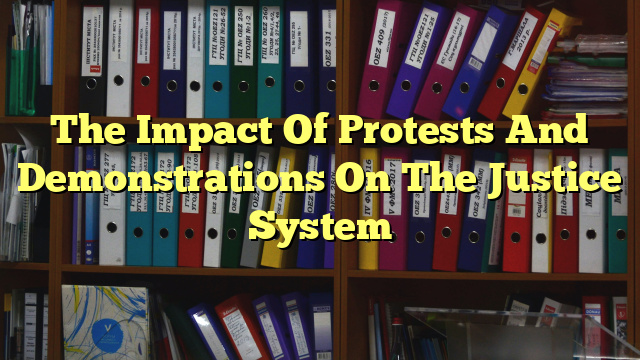Table of Contents
- Definition of Protest and Demonstration
- History of Protests and Demonstrations
- Impact of Protests and Demonstrations on the Justice System
- Potential Negative Effects of Protests and Demonstrations
- Benefits of Protests and Demonstrations
- Conclusion – Why Demonstrations are Important for Justice System
Definition of Protest and Demonstration
A protest is a public expression of opinion, usually involving a large group of people, aiming to influence public opinion or government policy. It can take the form of a physical march, a boycott, or a demonstration. A demonstration is a public gathering of people to express their political, economic, or social grievances in an effort to bring about social change. Protests and demonstrations are often used to bring attention to an issue, to call for change, or to draw attention to a particular group or cause.
History of Protests and Demonstrations
Protests and demonstrations have been used for centuries to call for change and to make their voices heard. Examples of successful protests and demonstrations include the civil rights movement in the United States, the Women’s Suffrage movement, and the protest against the Vietnam War.
The most successful protest in the civil rights movement was the 1963 March on Washington, which was organized by Martin Luther King Jr. and other civil rights leaders to call for an end to racial segregation in the United States. This march is credited with helping to pass the Civil Rights Act of 1964, which outlawed discrimination based on race, color, religion, sex, or national origin.
Impact of Protests and Demonstrations on the Justice System
Protests and demonstrations can have both a positive and a negative impact on the justice system. On the one hand, protests and demonstrations can bring attention to an injustice and can help to create public pressure for change. On the other hand, protests and demonstrations can lead to violence and property damage, which can lead to criminal charges and legal action.
Potential Negative Effects of Protests and Demonstrations
Protests and demonstrations can have a negative impact on the justice system. In some cases, protests and demonstrations can lead to violence, property damage, and criminal charges. Additionally, protests and demonstrations can lead to a sense of unrest and instability in a community, which can have negative consequences for the justice system.
Benefits of Protests and Demonstrations
Despite the potential negative impacts of protests and demonstrations, these activities can also have a positive impact on the justice system. Protests and demonstrations can bring attention to social issues and injustices, and can help to create public pressure for change. In many cases, protests and demonstrations have led to the passage of laws and social reforms that improved the justice system.
Conclusion – Why Demonstrations are Important for Justice System
Protests and demonstrations are an important part of the justice system. They provide an opportunity for people to make their voices heard and to call for change. At the same time, they can have both positive and negative consequences, so it is important to be mindful of the potential impacts of protests and demonstrations.
Questions
- What are the negative effects of protests?
- Protests and demonstrations can lead to violence and property damage, which can lead to criminal charges and legal action. Additionally, protests and demonstrations can lead to a sense of unrest and instability in a community, which can have negative consequences for the justice system.
- What was the most successful protest in the civil rights movement?
- The most successful protest in the civil rights movement was the 1963 March on Washington, which was organized by Martin Luther King Jr. and other civil rights
- The most successful protest in the civil rights movement was the 1963 March on Washington, which was organized by Martin Luther King Jr. and other civil rights


Protests and demonstrations have had a significant impact on the justice system, enacting great changes within it.